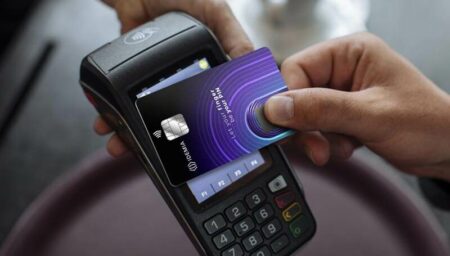Let your finger be your PIN with F.CODE


“Contactless?” You’ve likely been asked the last time you handed over your payment card. It’s a sign of our times. The way we pay in recent years has changed drastically in much of the developed world. This trend goes far beyond the growing adoption of online transactions; it also transforms all forms of face-to-face transactions in our everyday life. Just a few years ago, we often paid in cash – whether at a restaurant, a boutique or even among friends. Tomorrow, we’ll be able to pay just by being present, through the wonder of biometrics. Getting there will take some time and a lot of technology behind the scenes.
While the world is at different stages of this transformation (some Nordic merchants already turn up their noses at cash payments!), cash will soon be considered archaic. Right now, there are roughly 15 billion debit and credit cards being swiped and tapped the world over, and that is just phase one of this journey. The cashless trend also extends to how we transfer money online or via various mobile applications. Here, the convenience factor is obvious. We’ve all owed a friend €20 at some point, and we never seem to have cash on us. Not a problem in the cashless world: transferring through apps can now be done in a matter of seconds, from anywhere and to anyone.
For small everyday purchases, the leading trend is contactless payment. Users validate purchases by tapping their payment cards on a terminal – no PIN code necessary – shaving precious seconds off the total transaction time.
The contactless craze is spreading fast. Today, contactless transactions are typically capped around €25 – €30; but as consumers, once we’ve adopted the tapping behavior, we’re reluctant to go back to our old ways. In the near future, biometric data could play a crucial role in replacing the PIN code and enable contactless payments for higher amounts, while guaranteeing total security. IDEMIA has been a pioneer in testing the waters with its F.CODE solution: a card with an embedded fingerprint sensor that biometrically authenticates the cardholder as contactless purchases are made.
Another trend driving us towards new behaviors and expectations is the uberization of payments. This is based on the idea that the act of paying should require zero effort from the consumer – to the point where it can even go unnoticed. When you arrive at your destination, you just get out of the Uber, without doing anything to pay. This will be taken to the next level with connected IoT devices, such as refrigerators, that are capable of automatically ordering milk from an online vendor before you even run out.
While the user journey becomes increasingly simplified, the security measures must be adapted to these new payment habits. With IDEMIA’s digital enablement platform, retailers that once kept your card information in their database (a fraudster’s dream, really) can now store a “token” of your card that only works a limited context, e.g. for one merchant only. This switch creates a much less tempting target for fraudsters, as stolen token information can’t be used anywhere else.
The next phase of payments will be even more intuitive as the payment industry increasingly turns to biometrics to authenticate the payments. All we will have to do to pay is wave our hand past a fingerprint reader or have our face captured by a face recognition camera.
At IDEMIA, we are primed to be on the front line of this next phase. Biometrics is in our DNA and we are experts in capturing and securing biometric data. After all, simplifying and streamlining our purchases means nothing if our identity and finances aren’t secure.
Related videos